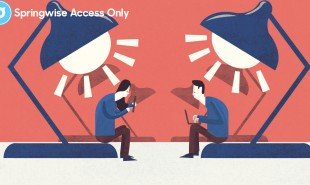
“There is a rusty light on the pines tonight;
sun pouring wine, lord, or marrow”
—Joanna Newsom.
As we enter colder months in the northern hemisphere, the shortening days illuminate the effect sunlight has on us on a day-to-day basis. Though it may come as no surprise that natural lighting is better for you than artificial lighting, exactly how it can improve productivity has become an area of increasing interest.
A recent study by scientist Mirjan Muench experimented with 25 young subjects, who spent one afternoon under electric light and one under daylight. As imagined, they preferred the aesthetic of daylight, but their state of alertness and mood also improved significantly in these conditions. The study revealed that the different lights that enter our eyes actually have an effect on the chemistry in our bodies.
In recent decades of course, we have a third major light source in our daily lives: the blue light emitted from screens, which can often strain eyes and cause headaches. And most of us probably find ourselves switching from one screen to another throughout the day with no rest. One piece of research from Penn State University showed that people who read e-books at night weren’t as alert the next day as those who read paper books. This was largely because light-emitting devices prolong the time it takes to fall asleep, disrupt our circadian clock, and suppress levels of the sleep-promoting (and cancer-preventing) hormone melatonin. So how do we get a good balance, and ensure we’re waking up every day in a position to be creative?
Our Innovation Culture Bulletin Five this week offers a range of ways to harness the benefits of the natural, along with the convenience of the artificial. Pick the most practical for you and suggest them to your co-workers to see the difference they can make.
1. Try incorporate indirect light that mimics daylight. In schools, exposure to natural light was shown to improve test scores and absenteeism. But in cases where sourcing natural light is not possible, switching to lights that are indirect and ambient, which can create a daylight-esque brightness that doesn’t strain your eyes, can make a difference. The Springwise-featured Lucy could help you too — it’s a smart mirror that uses robotics to follow the sun and direct sunlight into the room. There is also Coelux’s fake window, which will simulate sunlight from around the world with nanoparticle technology.
2. Experiment with redshifted lighting. Programs like f.lux for Mac can help modulate the light emitting from your screen — by making it warmer or colder — so it corresponds with your natural rhythm. There are also bedside lamps that produce warm, red glows to a similar effect. (note: f.lux can only be installed on iPhones that have been jailbroken. If that’s not your thing, you can check out this short guide to reduce the iPhone’s brightness beyond the default.)
3. Embrace the darkness. A recent poll by the National Sleep Foundation showed that 95% of people use some form of electronics the hour before they go to bed. The blue light pouring from the devices delays the production of melatonin. What’s more, having technology in the bedroom often disrupts sleep, and has shown to demonstrate changes in neuronal connectivity in parts of the brain involved in memory and affective responses. Try removing as much tech as you can from your bedroom, and see the difference the darkness can make.
4. Opt for the analogue. When you can, opt for devices that use e-ink, or just try to unplug as much as you can and go analogue — Our innovation Culture Bulletin on the Thinking Hand has some suggestions.
5. Go outside more. Many offices now implement a “no eating at the desk” rule. Having that extra 15 minutes, or hopefully an hour, of sunlight beaming on your skin can help regulate your cortisol levels, which can assist the body in managing stress, amongst other benefits such as aiding sleep.
We’re once again sharing some music from the Springwise office via Spotify. Please feel free to get in touch, and look out for another Innovation Culture Bulletin next month, when we’ll be looking at how to improve the communication in your office.
The post Innovation Culture Bulletin: Illuminated appeared first on Springwise.




